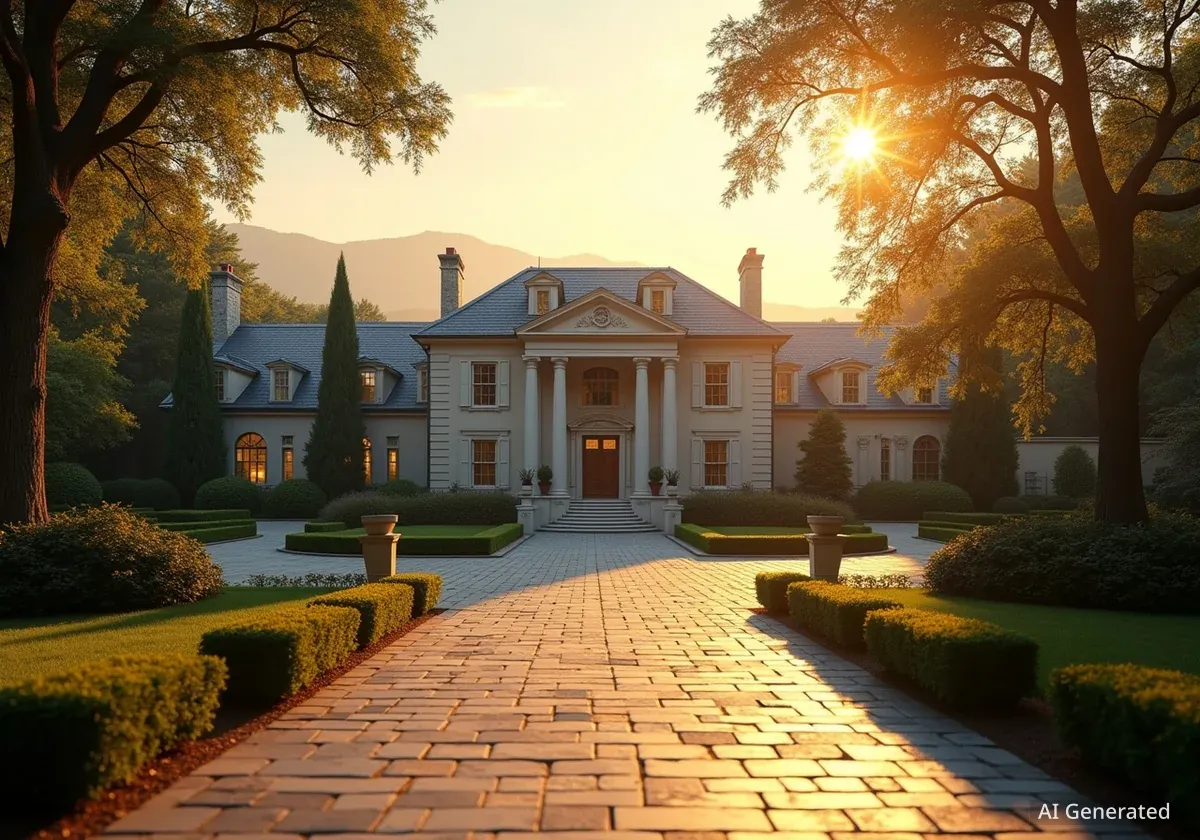The high-end real estate market in the United States is experiencing a period of significant activity, marked by multi-million dollar transactions involving iconic properties. Recent months have seen landmark sales, including estates formerly owned by celebrities and historic mansions, highlighting strong demand at the very top of the market.
Alongside these record sales, a notable trend is emerging: the shrinking number of major metropolitan areas where a luxury home can be purchased for less than $1 million. This shift indicates rising prices and increasing exclusivity in the premium property sector across the country.
Key Takeaways
- Several high-profile properties, including those once owned by Rosie O’Donnell and Julia Roberts, have recently been sold.
- The iconic Spelling Mansion in Los Angeles set a new sales record, demonstrating the strength of the ultra-luxury segment.
- A former summer retreat used by the Obama family was also among the most expensive transactions.
- Data shows a sharp decline in the number of major cities where luxury homes are available for under $1 million, falling from 30 to just 7 over five years.
A Look at Recent Landmark Transactions
The upper echelon of the U.S. real estate market has been buzzing with activity. Several significant sales have captured headlines, underscoring the value placed on unique and historically important properties. These transactions are not just about square footage; they often involve homes with a storied past and high-profile former owners.
These sales provide a clear indicator of market confidence among the wealthiest buyers. Despite broader economic fluctuations, the demand for trophy properties in prime locations remains exceptionally strong.
High-Profile Celebrity Estates Change Hands
Among the most notable sales was the Miami Beach mansion formerly owned by comedian and television personality Rosie O’Donnell. The waterfront property, known for its prime location and extensive amenities, attracted significant interest before its sale was finalized.
Similarly, a sprawling compound in Kauai, Hawaii, once owned by actress Julia Roberts, was also sold. This type of property, offering privacy and natural beauty, represents a segment of the luxury market that continues to perform well, particularly among buyers seeking exclusive retreats.
What Defines a 'Trophy Property'?
Trophy properties are unique, high-value homes that are often considered landmarks. Their value is derived not only from their size or location but also from their architectural significance, historical importance, or association with famous individuals. These assets are often seen as long-term investments by ultra-high-net-worth individuals.
The Spelling Mansion and Other Record Sales
Perhaps the most talked-about transaction was the sale of the Spelling Mansion in the Holmby Hills neighborhood of Los Angeles. The massive estate, famously built by television producer Aaron Spelling, reportedly sold for a price that set a new record for the area, highlighting the incredible sums that top-tier properties can command.
Another significant sale involved a Martha's Vineyard estate that previously served as a summer retreat for former President Barack Obama and his family. The property's desirable location and presidential connection added to its prestige and final sale price.
By the Numbers: The Ultra-Luxury Market
- The Spelling Mansion: Originally listed for $200 million, the property is one of the largest single-family homes in Los Angeles County.
- Market Concentration: A majority of sales over $50 million are concentrated in a few key markets, including Los Angeles, New York City, and South Florida.
- Buyer Profile: Buyers in this segment are often a mix of international business leaders, tech entrepreneurs, and celebrities.
These sales demonstrate that for the right property, price is often a secondary consideration. Buyers are willing to pay a premium for unparalleled location, privacy, and prestige.
The Shrinking Market for 'Affordable' Luxury
While nine-figure sales dominate headlines, a more subtle but equally important trend is reshaping the broader luxury market. A recent analysis revealed a dramatic shift in what is considered the entry point for luxury real estate in major U.S. cities.
Just five years ago, buyers could find luxury homes—typically defined as the top 5% of the market by value—for under $1 million in 30 major metropolitan areas. Today, that number has fallen to just seven. This change reflects widespread price appreciation and growing demand for high-end properties.
Which Cities Remain Under the $1 Million Threshold?
The remaining seven metro areas where the luxury market still begins below $1 million are generally located in regions with a lower overall cost of living. This contrasts sharply with coastal hubs like San Francisco, Los Angeles, and New York, where the entry point for a luxury property is now several million dollars.
"The concept of a sub-million-dollar luxury home is becoming a rarity in America's major economic centers. This shift forces buyers to either increase their budgets or look toward smaller, emerging luxury markets."
This trend has significant implications for affluent buyers. It means that the barrier to entry for premium housing has risen substantially, pushing the definition of "luxury" to a much higher price point in most of the country.
What These Trends Mean for the Housing Market
The combination of record-breaking sales at the top and rising entry-level luxury prices paints a picture of a market that is becoming increasingly stratified. The ultra-wealthy continue to invest heavily in one-of-a-kind properties, viewing them as stable assets in a volatile world.
Meanwhile, the rising floor for luxury properties indicates that wealth is concentrating in major urban areas, driving up home values across the board. This can create challenges for even high-income earners who find themselves priced out of the top tier of the market in their cities.
Analysts will be watching to see if these trends continue. The performance of the luxury real estate sector is often seen as a leading indicator of broader economic confidence and investment patterns among the world's wealthiest individuals.





